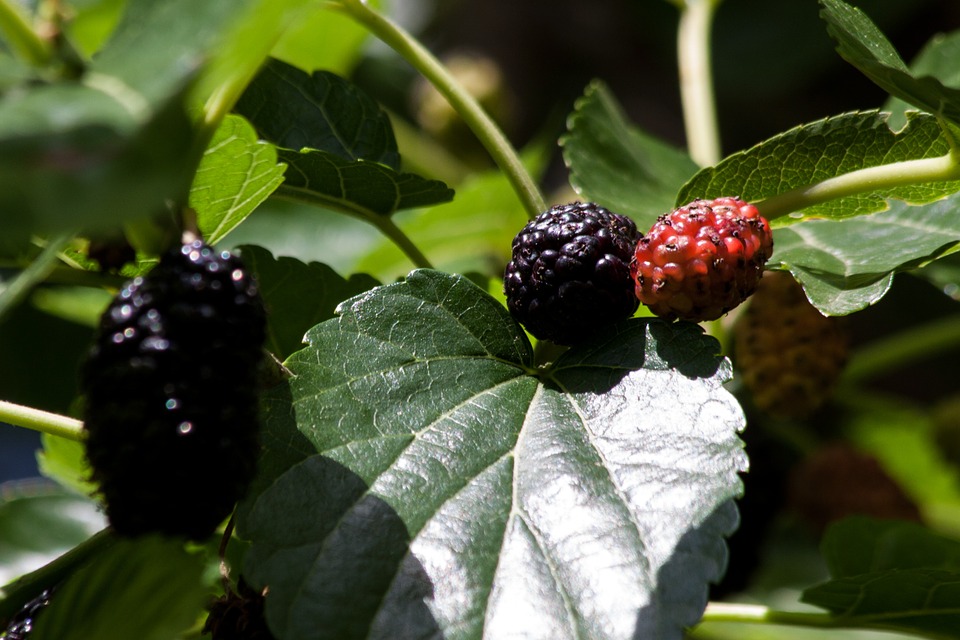Mulberries are a genus of flowering plants in the family Moraceae. They are made up of 10 to 16 species of deciduous trees that grow wild and under cultivation in many temperate world regions. Take a look below for 24 more fun and fascinating facts about mulberries.
1. The closely related genus Broussonetia is also commonly known as mulberry, notably the paper mulberry, Broussonetia papyrifera.
2. Mulberries are fast growing when young, but soon become slow-growing and rarely exceed 10 to 15 meters, or 30 to 50 feet tall.
3. Mulberry leaves are alternately arranged, simple and often lobed and serrated on the margin. Lobes are more common on juvenile shoots than on mature trees.
4. The mulberry fruit is a multiple fruit, approximately 2 to 3 centimeters long. Immature fruits are white, green or pale yellow.
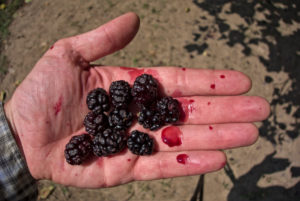
5. In most species of mulberry, the fruits turn pink and then red while ripening, then dark purple or black, and have a sweet flavor when fully ripe.
6. The fruits of the white-fruited cultivar of the mulberry are white when ripe. The fruit of this cultivar is also sweet, but have a very bland flavor compared with darker varieties.
7. Mulberries grow in moist forests and near streams, on a well-drained soil, exposed to direct sunlight.
8. Mulberry trees provide excellent shade, but people rarely plant it in urban areas because of the large quantities of highly allergenic pollen.
9. Mulberries can produce male and female flowers on the same plant or on the separate trees. Flowers are greenish or creamy colored, arranged in short catkins designed for the pollination by wind. However, some types of mulberry are able to produce fruit without any pollination.
10. Mulberry fruit is an aggregate fruit composed of numerous small drupes located around a centrally positioned stem. Unlike in raspberries, the stem remains in the center of the fruit after the harvest.
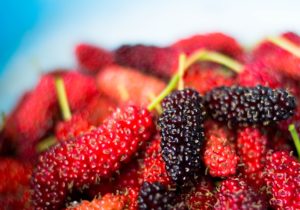
11. Mulberry trees start to produce fruit 10 years after planting. The color of the fruit depends on the variety of the mulberry tree. It can be black, purple, pink, red or white.
12. Mulberries are a rich source of vitamin C, vitamin A, vitamin E, vitamin K and minerals such potassium, iron and magnesium.
13. Mulberries can be eaten raw or in the form of jams, pies and muffins.
14. Some fruitless varieties of mulberry are cultivated for ornamental purposes.
15. The leaves of white mulberry trees are an important source of food for silkworms. Caterpillars encapsulate themselves into the casings made of silk threats that are used in the silk industry.
16. The cultivation of white mulberry for silk manufacturing has been going on for a thousand years in China.
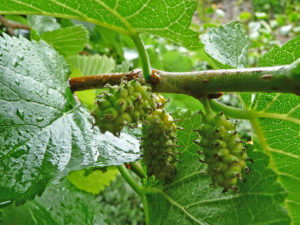
17. Mulberry is associated with evil spirits in Germany due to the ancient belief that the devil uses the root of the mulberry tree to polish his boots.
18. Ancient Roans used leaves from white mulberry trees for treating various diseases of the mouth and lungs.
19. Native Americans used mulberry as a laxative and as a cure for dysentery.
20. Orange, red, purple, black and blue pigments isolated from mulberries are used as coloring agents in the food and fabric industry.
21. The lightweight mulberry wood is used in manufacturing fence posts and barrels.
22. Branches from the mulberry tree are used in manufacturing baskets.
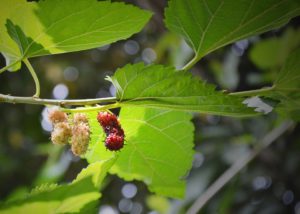
23. Red mulberry trees can survive up to 75 years, while black mulberry trees can live and produce fruit for hundreds of years.
24. Vincent van Gogh featured the mulberry tree in some of his paintings, notably Mulberry Tree. He painted it after a stay at an asylum, and he considered it a technical success.

